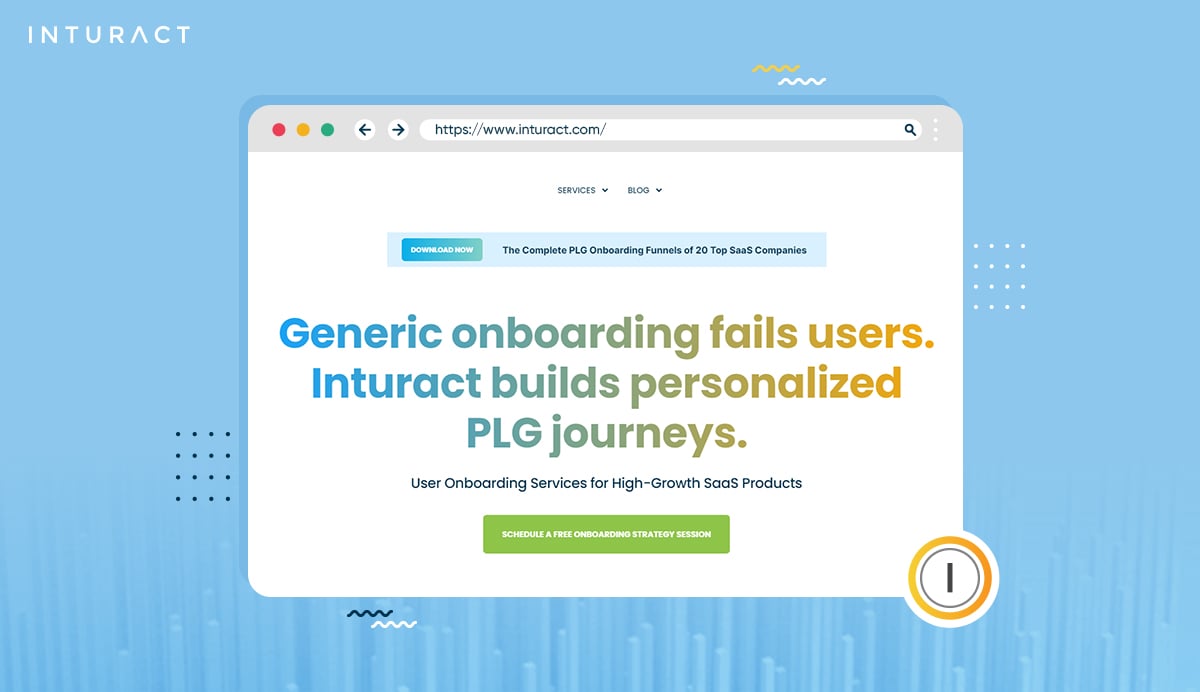Ready to use Appcues?

You’re standing at the brink of a significant decision for your product – implementing user onboarding with Appcues. Chances are, you’ve already explored the basics of user onboarding and understand its importance in accelerating growth.
Now, you’re faced with a crucial question: Is it the right time for your product to adopt Appcues to enable user onboarding?
This blog will guide you through a comprehensive assessment. We’ll delve into specific areas such as the maturity of your product, your team’s capability to integrate and manage new tools, and importantly, whether you have the foundational elements in place to maximize Appcues’ capabilities. Are your user personas well-defined? Do you have clear objectives for user engagement and retention? How adaptable is your team to new technologies and methodologies? These are just some of the critical questions we’ll explore.
Join us as we dissect what it truly means to be prepared to integrate Appcues into your user journey, ensuring that your move is not only strategic but also beneficial for your users and your product’s growth.
Full Understanding of Your Product
When we talk about mature product understanding, we’re not just referring to knowing what your product does or its features. It’s about grasping the subtleties of how your product fits into the lives of your users, the problems it solves, and the unique ways it delivers value.
Every product has a variety of features, but not all are equally important to every user. Understanding which features are most impactful for different user segments allows you to highlight them strategically during onboarding, enhancing user engagement and satisfaction.
Complete product understanding enables you to anticipate potential questions or challenges different users might encounter. With Appcues, you can integrate proactive tips and guidance, addressing these issues before they become pain points for different user segments.
The more you understand your product and your user segmentation, the better you can create intuitive onboarding flows. This involves knowing how users interact with your product, what might confuse them, and how they progress from novice to power users.
Knowing the Aha Moments
The “aha moment” is that pivotal instance when a user realizes the potential value of your product. It’s the turning point where engagement and retention become more likely.
Before implementing Appcues, it’s essential to identify the Aha moment. Ask yourself:
- What feature or functionality typically leads to habit formation?
- At what point in the user journey does this occur?
Different user segments might have different Aha Moments. Understanding these allows you to tailor the onboarding experience for diverse user needs, enhancing the relevance and effectiveness of your onboarding strategy.
By understanding the Aha Moments, you can use Appcues to provide focused guidance and hints at the right time, avoiding overwhelming users with unnecessary information and instead directing them towards key features and functionalities.
Mapping Out the Customer Journey
The customer journey is the complete story of the user’s experience: from the initial contact, through the process of engagement, and into a long-term relationship. A deep understanding of this journey is crucial for several reasons:
- It helps identify the key touchpoints where intervention or guidance is needed.
- Understanding the journey helps in personalizing the onboarding experience.
- It allows you to anticipate potential drop-off points and address them proactively.
With Appcues, you can design onboarding flows that cater to different stages of this journey, ensuring a smooth and engaging experience for the user.
Knowing Habit Loops and User Engagement
Habit loops are patterns of behavior that, once established, become automatic responses to specific cues. They are critical in ensuring that users not only start using your product but continue to do so regularly, keeping in mind that the frequency of the habit itself may vary, ie. some problems are solved daily, others monthly.
Consider the following:
- What are the repeatable actions you want users to take in your product?
- What is the frequency of the problem you are solving?
- How can you use Appcues to encourage these behaviors?
- What rewards can you provide to reinforce these habits?
Understanding and leveraging habit loops in your onboarding process can significantly boost long-term user engagement and satisfaction.
Resource Availability
Implementing Appcues isn’t just a matter of having the software; it requires a comprehensive allocation of various resources. These include:
Financial Resources:
- Budgeting for Appcues: Beyond the subscription cost, consider the expenses related to the design, development, and maintenance of the onboarding flows. Ensure that your budget accounts for these ongoing costs.
- ROI Consideration: It’s important to evaluate the potential return on investment. Will the enhanced user onboarding experience lead to higher user retention and, consequently, increased revenue? What is the cost of doing nothing?
Human Resources:
- Team Involvement: Identify the team members who will be directly involved with Appcues – typically product managers, UX/UI designers, and developers. Ensure they can take on this work alongside their existing responsibilities.
- Training Needs: Assess if your team requires training to use Appcues effectively. This might include learning how to create and manage flows, analyze user data, and iterate based on feedback.
Time Allocation:
- Development Time: Creating effective onboarding flows takes time. From brainstorming sessions to designing, testing, and iterating – allocate sufficient time to develop these elements properly.
- Ongoing Management: Onboarding is not a set-and-forget task. Regular updates, analysis, and refinements are necessary, requiring a continuous time investment.
Technical Resources:
- Integration Capabilities: Ensure that your current technical infrastructure and software stack are compatible with Appcues. This might require technical adjustments or enhancements. For example, your development team may need to install special tracking code or pass in specific variables to build segments.
- Data Analysis Tools: To make the most of Appcues, you’ll need tools to analyze user behavior and feedback. Ensure you have or can obtain these analytical tools, otherwise, how will you know it was all worth it.
Feedback Loops (External, and Internal)
Feedback loops are mechanisms for gathering, analyzing, and acting upon feedback. In the context of Appcues, these loops are two-fold:
- External Feedback Loops (User Feedback): This involves collecting and responding to feedback from your users about their onboarding experience and overall product interaction.
- Internal Feedback Loops (Team Feedback): This pertains to feedback within your organization, among team members who are managing and analyzing the Appcues implementation.
If you have these established, you’re on the right track to be ready to use Appcues.
If you haven’t set up feedback loops yet, consider the following steps to prepare for using Appcues:
- Develop a User Feedback System: Start by implementing simple feedback form in Appcues. This will help you gather initial user responses and set the stage for more complex feedback mechanisms. Encourage user feedback by making it easy and accessible. Include feedback prompts at the end of onboarding flows or at strategic points within your product.
- Establish Internal Feedback Processes: Create channels for internal communication and feedback among the teams involved in the Appcues implementation. Regular meetings, shared documents, and collaborative tools can facilitate this process. Encourage a culture of open feedback where team members can share insights, concerns, and suggestions regarding the onboarding process.
- Set Up Metrics for Success: Define clear metrics to measure the success of your onboarding flows. This could include user engagement rates, feature adoption, or feedback scores. Regularly review these metrics to assess the effectiveness of your onboarding and make data-driven decisions.
- Seek External Guidance: If setting up feedback loops seems daunting, consider seeking external expertise. This could be in the form of consulting services or engaging with communities of other Appcues users to learn best practices. Inturact can also help you in planning and implementing your user onboarding with Appcues.
Next Steps![Next-Steps-Inturact-Internal-Image-30-Jan-2024]()
Now, it’s time to put these insights into action. Whether you find your organization ticking all these readiness boxes or still working on a few, the path forward involves continuous learning and improvement.
You have two paths to choose now:
- Evaluate and Plan: Take a step back and objectively assess where your company stands in terms of readiness. Develop a plan to address any gaps, be it in resources, knowledge, or strategy.
- Leverage Expertise: Sometimes, an external perspective can be a game changer, especially when it comes to something as nuanced as user onboarding.
This is where Inturact comes in.
Inturact is a specialized service agency that empowers SaaS companies to refine and perfect their user onboarding processes. With a deep understanding of the challenges and opportunities in user onboarding, Inturact can be your partner in reducing churn and improving retention.
Don’t let the complexities of user onboarding be a stumbling block in your journey toward user satisfaction and business success. Whether you’re just beginning to explore the potential of tools like Appcues or looking to optimize your existing strategies, a conversation with Inturact could be your next big step forward.
Reach out to Inturact to discuss your specific needs and challenges. Our team of specialists is ready to provide tailored solutions that resonate with your business goals.
Working with Inturact means engaging in a collaborative process where your business insights meet their strategic expertise, leading to a user onboarding experience that truly reflects your brand and values.
Talk to Inturact Today and embark on a journey to onboarding excellence with Appcues.




